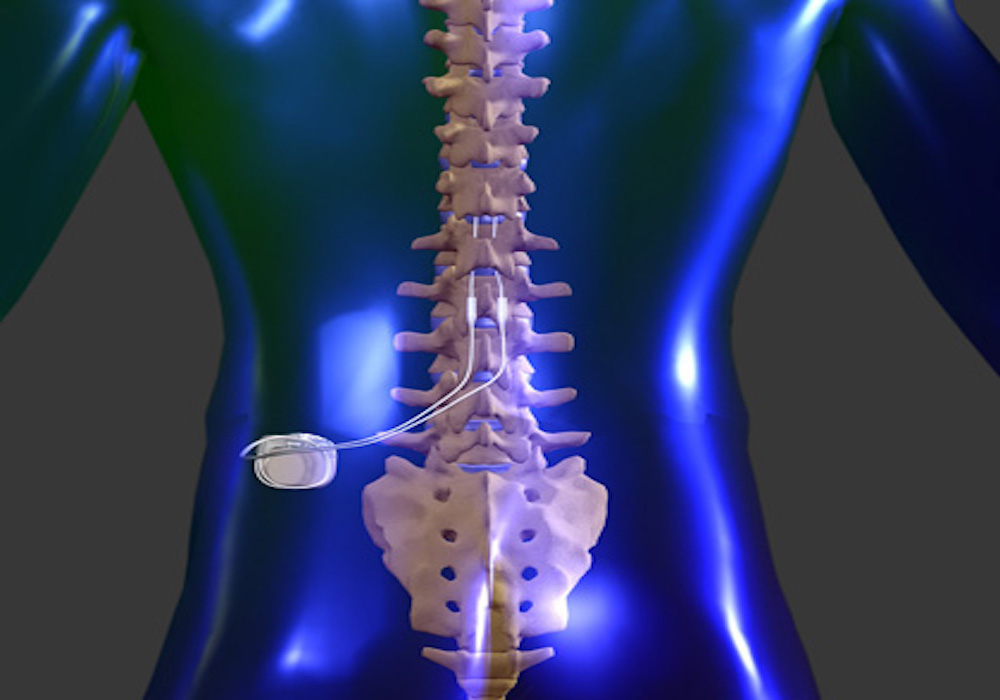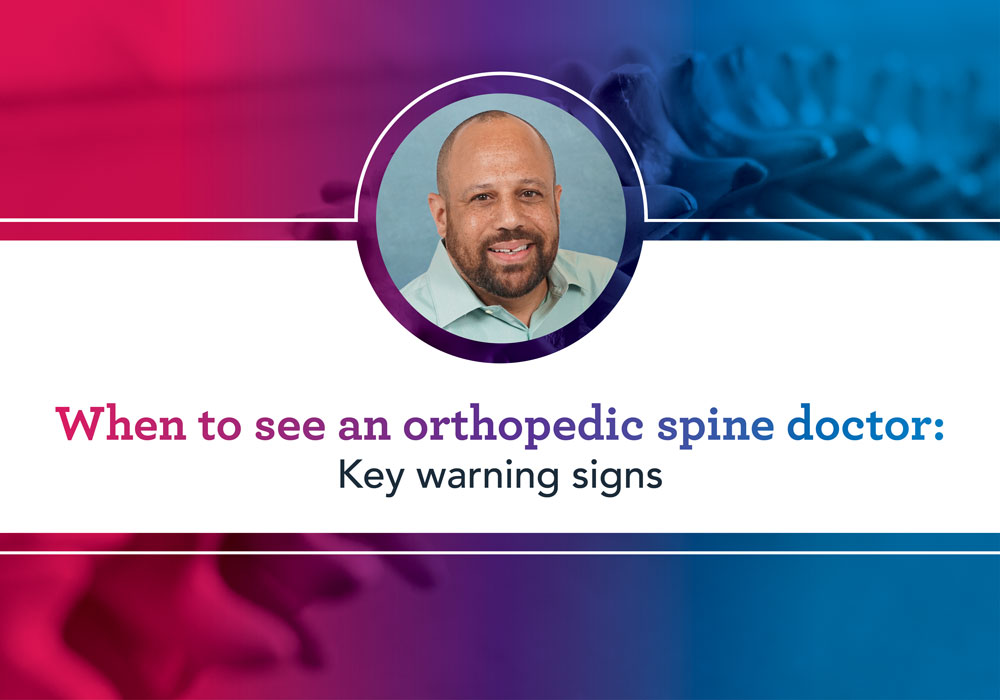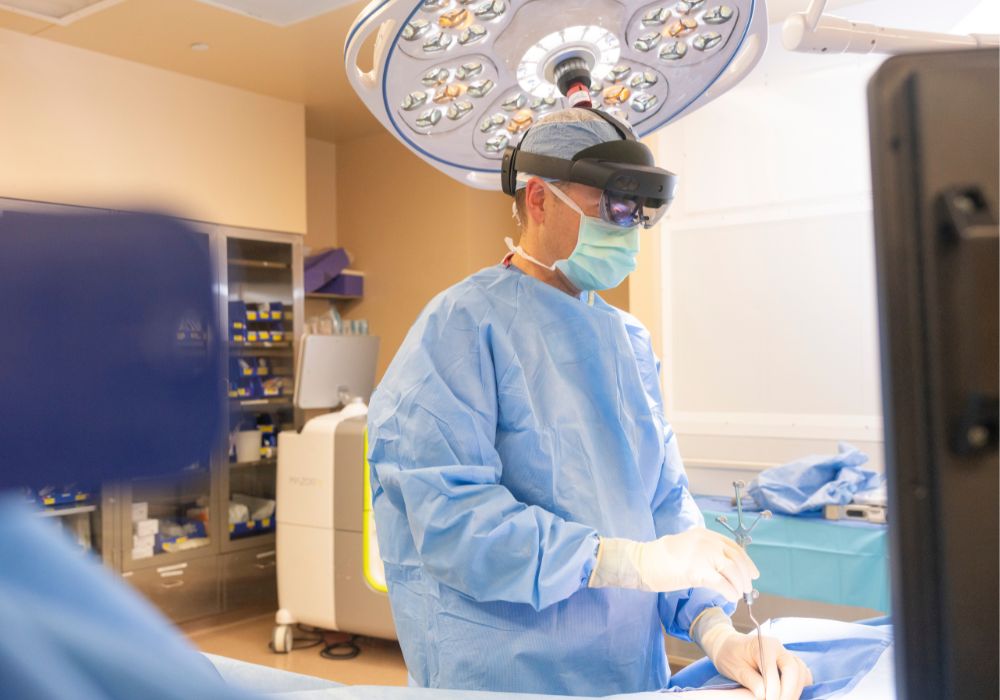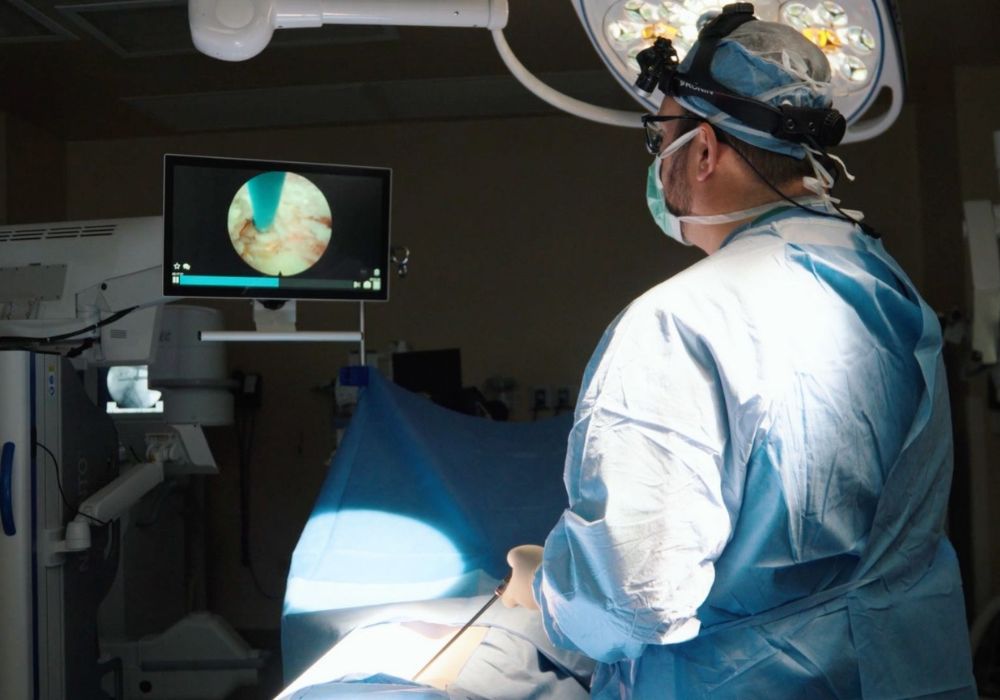This article is part of the Comprehensive Guide to Minimally Invasive Spine Surgery.
With the opioid crisis raging in America, many doctors are forgoing painkiller prescriptions and instead recommending a spinal cord stimulator for back pain relief.
At OrthoIndy, physicians are concerned about the risk that opioids pose when not used appropriately or when used without a correct medical diagnosis. OrthoIndy physicians strive to prevent the misuse of opioids and the possible effects it may have on individual patients, their families and our society.
Read on to learn how a spinal cord stimulator for back pain relief can be a safe alternative to opioids, and who is a good candidate for this non-operative treatment option.
Using technology and therapy to treat bain pain
“With the ease of prescribing pain medication in the United States, some doctors are handing out opioid pain medication as a first-line treatment for any type of pain,” Dr. Nicholas Jasper says. OrthoIndy physiatrist. “But that’s not always the answer patients need.”
Dr. Jasper is one of many OrthoIndy physiatrists who specialize in physical medicine and rehabilitation and aims to treat musculoskeletal and nerve-related conditions in a non-operative manner through the use of non-opioid medication, therapy, and what is minimally-invasive spine surgery.
Although physiatrists do not perform traditional surgery, it is important to note that they do not heavily rely on addictive opioid pain medication to treat patients. In fact, it’s the opposite.
“The fact that the United States consumes 99% of the world’s supply of hydrocodone has been eye-opening for some of my patients. They want to know how people in other countries manage pain without opioid use,” Dr. Jasper says.
How can a physiatrist help you avoid opioid medication?
“It’s important to see a physiatrist before resorting to taking opioid pain medications. Opioids are often a ‘knee-jerk’ reflex to treat pain and it’s perceived by many that opioids are ‘the magic pill,’” Dr. Jasper says.
Instead, 90% of patients who suffer from neck and back pain have symptoms controlled with a non-operative treatment plan – a plan that does not involve opioids for back pain.
Managing pain without opioid use is exactly the service that OrthoIndy physiatry provides. The physiatry team focuses on a treatment plan that allows the patient to return to their pre-injury activity levels without relying on opioid pain medication.
“I have some patients that see me for the first time and are taking a significant amount of opioid pain medicine, and they still aren’t finding relief,” Dr. Jasper says. “In fact, a lot of patients think they can’t live without them, but with the right treatment options, they can.”
Learn more about OrthoIndy’s spine robotics program
Back pain relief starts with a proper diagnosis
According to Dr. Jasper, it all comes down to diagnosing the problem and coming up with a treatment plan to help the patient improve their symptoms. Treatment may include prescription medications such as anti-inflammatory medications or neuropathic pain medications like gabapentin, pregabalin, or duloxetine, which helps to treat pinched nerves.
Physical therapy is another avenue that helps educate patients on proper exercise treatment that they should be doing to help focus on core strengthening and stabilization which can help improve back and leg pain symptoms.
If there is no improvement with this treatment plan then advanced imaging with a CT scan or MRI is necessary to further evaluate the patient’s spine. Imaging can help guide further treatments that involve spinal injections, whether it be epidural steroid injections or injections that target the joints in the spine called facet joints.
Spinal cord stimulator for back pain relief
For those who don’t improve with these measures and are not a candidate for robotic spine surgery, they may be a candidate for a spinal cord stimulator trial. This type of treatment is also referred to as neuromodulation.
A spinal cord stimulator for back pain relief is an alternative to opioids to help those who are dealing with chronic pain that has not improved with typical conservative treatment or surgery. Spinal cord stimulation uses electricity to treat pain rather than medication.
This is achieved by placing a small wire into the spinal canal, which sends small electrical impulses to the spinal cord. The wire is connected to a pulse generator that helps create these electrical impulses which interrupt pain signals that are sent from the spine to the brain. By interrupting this signaling pathway, patients are able to experience pain relief and improved quality of life.
The unique aspect about using a spinal cord stimulator for back pain relief is that a patient can go through a spinal cord stimulator trial first, before determining if they want this device implanted.
“The truth is, physicians truly help patients when they take the time to listen to the patient’s complaints, examine them and explain the diagnosis and possible treatment options,” Dr. Jasper says.
Learn why you should consider back surgery with a spine robotics system
Schedule an appointment
Your well-being is important to us. Call us at 317.802.2883 to schedule an appointment or make an appointment request online.
If your injury or condition is recent, you can walk right into one of our OrthoIndy Urgent Care locations for immediate care. For rehabilitation and physical therapy, no referral is needed to see one of our physical therapists.





